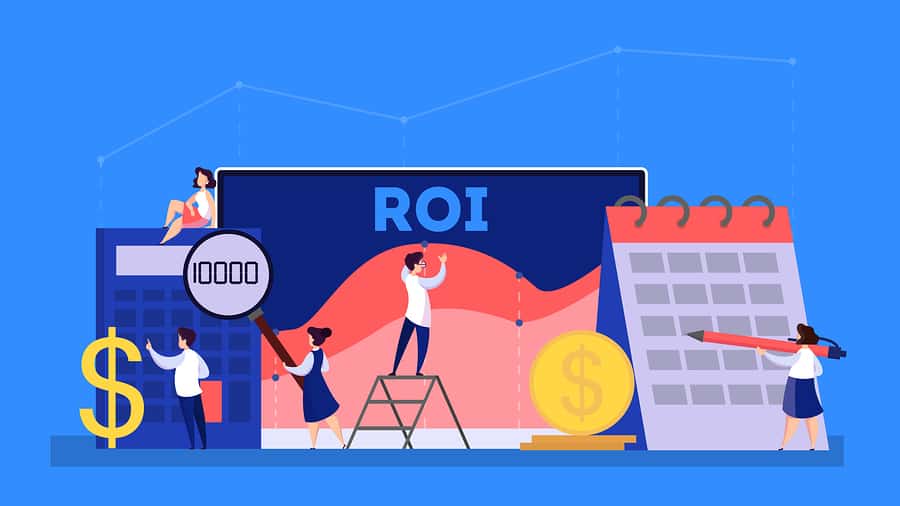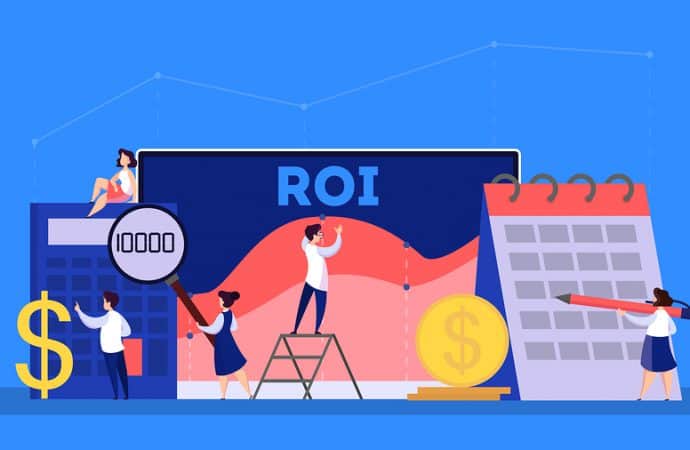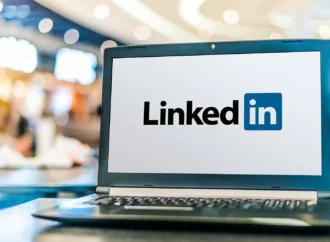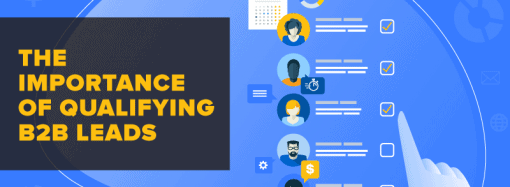MAXIMIZE YOUR BUDGET WITH SUPERIOR B2B ACCOUNT-BASED MARKETING How Account-Based Marketing (ABM) Helps B2B Businesses Generate Qualified Lead$ The purpose of B2B account-based marketing is to generate qualified leads, often the greatest challenge that companies encounter. Between all of the sales calls, e-mails, and networking, the task of finding interested buyers can become both
MAXIMIZE YOUR BUDGET WITH SUPERIOR B2B ACCOUNT-BASED MARKETING
How Account-Based Marketing (ABM) Helps B2B Businesses Generate Qualified Lead$
The purpose of B2B account-based marketing is to generate qualified leads, often the greatest challenge that companies encounter. Between all of the sales calls, e-mails, and networking, the task of finding interested buyers can become both daunting and tedious. However, put the right B2B account-based marketing campaign in place, and these struggles quickly begin to subside. Read on to learn more about how B2B account-based marketing will benefit your business.
The Goal: Generate Qualified Leads
B2B account-based marketing is a methodology that allows you to develop highly focused business strategies so that you can identify key decision-makers within your target market.
Where is the value generated? ABM connects you as quickly and efficiently as possible to potential clients that bring the most value to your business.
For example, ABM creates personalized campaigns to engage with prospects that would be most interested in your marketing message. Keep in mind though that ABM is more than just a lead generation tactic; it also encourages upselling and cross-selling to existing customers. Hello, customer loyalty!
Key Benefits of ABM
For B2B markets, ABM is becoming the predominant approach to target more valuable accounts. Some of the benefits include:
- Personalized Marketing Approach
A personalized message is more enticing than something that’s equivalent to your generic junk or spam mail. ABM provides marketers with insights about highly targeted potential leads. This allows them to create tailored campaign messaging based on a potential customer’s specific pain points or other particularities. In other words, ABM creates marketing materials with messaging that matters to specific leads, rather than generating catch-all materials that vaguely appeal to a larger number of leads.
- Sales and Marketing Alignment
Collaboration in any business is an important key to success. With ABM, marketing and sales departments work together; identifying target accounts, crafting customized campaigns and working together to move accounts through the pipeline.
- Shorter Sales Cycles
Major purchase decisions oftentimes involve multiple stakeholders, which means slower sales cycles. Without ABM, the sales process may have to start at a lower level in the organization and move sluggishly upwards towards the primary decision-maker. ABM helps speed up the sales process as you can nurture all of your prospects at once, and oftentimes will put you in touch with at least one key decision-maker from the get-go.
- Distinct ROI
Never miss the mark! B2B account-based marketing is exact and measurable, providing the highest ROI of all B2B marketing tactics.

85% of marketers who measure ROI describe B2B account-based marketing as
delivering higher returns than any other marketing strategy.
- Less Wasted Resources
For any B2B company, closing a sale without expending all of their resources is a top priority. B2B account-based marketing connects you with highly targeted accounts, allowing your company to utilize your time and resources more efficiently so you can close deals faster.
B2B Account-based Marketing Tools
There are several ways to utilize B2B ABM, but the strategy begins with creating meaningful segments; finding your ideal target market often takes a lot of initial industry research. Companies need to also discuss which tactics will work best for their business model. How you choose to implement ABM ultimately depends on your business’s wants, needs, and goals. It’s all about personalization.
That being said, diversifying your marketing methods is always a good idea. Integrating a combination of digital and traditional ABM strategies is a great way to reach certain leads that may not be receptive to your go-to methods, and it repeatedly places your company’s name in their mind. For example, seeing email, social media ads, webinar invites, and physical mail all from your company is far more likely to have an effect than spamming their email box eight times a week. Here are some common tactics:
- Events
In-person events are usually very successful. Most people like to put a face to a name to persuade their decisions on sales. Some examples could be dinners, facility tours, or other events like meet-and-greets.
- Webinars
The web is becoming more and more personable. Like meeting at an event, webinars can also be unique to specific companies as long as they are relevant and timely.
- Direct Mail
A personalized letter says a lot in this digital age. ABM is highly targeted, so gifts and marketing sent through direct mail have a potentially higher value for customer conversion.
Check out This Custom Thanks – a service dedicated to handwritten thank you notes and major events for businesses.
- Email Campaigns
Nobody likes spam mail. However, personalized e-mails are a different story. Emails have proven to be a valuable method of reaching clients, but only when they follow the ABM method of tailoring themselves to the recipient or their company. Marketo conducted a study where 78% of consumers said they would only engage with offers that have been personalized to their previous engagements with your brand.
- Paid Advertising
Pay-per-click (PPC) advertising, is a way of reaching out to targeted prospects online. Google, Bing, Facebook, LinkedIn, and many other social platforms allow for specific targeting and retargeting. PPC campaigns can be tailored to focus on a handful of specific titles or individuals within a potential client company at specific stages of your marketing funnel,
- Web Personalization
ABM can help you identify the gaps between your web content and the content that your targeted leads typically engage with. After these gaps have been identified you can utilize website personalization technology to create a tailored web experience for targeted prospects.
How to Get the Most Out of Account-Based Marketing
Conceptually understanding what ABM can accomplish and utilizing it correctly are two different things. Without proper record keeping, a high-quality lead gathering strategy, and a thorough understanding of the few limitations of ABM, it might be difficult to gauge the success of your ABM strategy even if it has been doing well for you.
Keep a Record of B2B Leads
If your sales team hasn’t been tracking their conversion rates, they need to start doing that now. One of the best KPIs you can measure is your lead conversion rate, as there’s no better measure of success than maintaining a database of how many sales you’re making, as well as those you fail to make, so you can alter your sales strategy. Having these records on hand is the best way to measure the success of a new account-based marketing strategy, as you can measure the rise in successful sales and what types of businesses they’re coming from.
Identifying High-Quality Leads to Focus Efforts On
One of the key characteristics of account-based marketing is focusing your sales efforts on a smaller number of leads that are more likely to convert into sales rather than casting a wide net and hoping you catch something. The latter typically involves a lot of wasted time in B2B arenas, because your number of potential leads is so much smaller than B2C, so generalized messaging tends to fall on deaf ears.
But how do you distinguish a high-quality lead from a low-quality lead? To accomplish that, you’ll need to have your marketing and sales team working closely together to identity key lead characteristics. Your marketing team should be focusing their efforts on key decision-makers in companies that match your desired buyer persona. These key decision-makers should have some authority on budgets, and your product or services must have the potential to soothe one of their pain points.
Checking all these boxes ensures your sales team’s skills and time are being put to good use, rather than floundering by trying to convince low-level decision-makers who don’t have a need you can fulfill.
How A.I. Can Boost Your Account-Based Marketing Efforts
Artificial intelligence is making an explosive impact on the scene of advertising across the board. From image creation, voice overs, and content development, A.I. is touching on most parts of the creative process, but it’s also assisting the more technical aspects of account-based marketing as well.
Content Development
Programs like ChatGPT are making waves in the industry. As of right now, it still can’t write an entire article effectively, especially if the topic is niche and the aggregate of online content for it is too low for ChatGPT to draw meaningful content from. But, it does serve as a fantastic idea generator for your copywriters to take advantage of, especially if the lead they’re trying to interest is in an industry they’re not especially familiar with. ChatGPT is also a fantastic tool for simply getting words on the page for your writers to work with. If utilized correctly, ChatGPT should increase your writers’ output.
Lead Scoring & Data Analysis
Software like Leadspace utilize A.I. to find other leads with similar profiles to your current clients. Tools like these vastly narrows the amount of time your marketers spend researching leads by doing much of the investigatory work in seconds. It matches qualities like department sizes, number of similar staff titles on LinkedIn, and other data aggregates that make potential leads similar to some of your star clients.
Software like this is highly dependent on data, so you’ll need to gather a lot of it on your current clients to make the most out of it. However, once the A.I. is up and running, it’ll save your marketing department hundreds of hours by allowing them to focus on crafting the personalized marketing materials. Perhaps with ChatGPT!
Challenges of Account-Based Marketing
Though more successful in B2B markets, account-based marketing isn’t easy. It requires a lot of information gathering and lead research to implement effectively. For example, it’s far easier to create generalized messaging that appeals to most business’s needs in the energy-generation sector. However, if there’s a specific business in that industry you want to target, you need to research that business’s recent history, ascertain its company culture, and discover the specific problems it’s dealing with if you want to create ABM messaging that really grabs their attention.
Much of that burden falls onto your marketing team. They’re the ones who need the investigatory skills and tech know-how to accurately pinpoint that lead’s weak points, develop personalized messaging, hunt down the right decision-makers, then begin the targeted marketing process. B2B account-based marketing is time-consuming and requires specific skills to utilize effectively, but it’s also the best means you have of funneling high-quality leads to your sales team and sealing the deal.
Bulls-Eye for Your Business and Budget
You have a story to tell, but you want to tell it to the right people who will actually listen and respond (i.e. convert to a qualified lead). The bottom-line for B2B ABM is reaching the right people within your target market, hence why personalizing your marketing campaigns is crucial to your success with customer conversion.
Want to know more about how Dream Factory’s team can help you pinpoint your ideal customer with a B2B ABM strategy?
We’re here to develop the strategy you need to succeed.
—
Resources: https://www.optimizely.com/optimization-glossary/account-based-marketing/

















